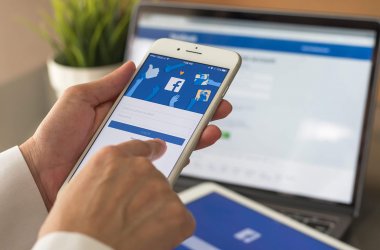As Egypt’s embattled President Hosni Mubarak gave up his presidency Friday, analysts and some of the Egyptian protestors said he’d still be in charge if not for the power of social networking.
After 18 days of tumultuous protests and stubborn refusals to leave a position he’s held for 30 years, Mubarak gave up power today, handing over authority to the nation’s military leaders. During a time of unrest that saw Mubarak’s regime disconnect Egypt from the Internet for several days, social networking sites like Facebook and Twitter served as critical tools for the people seeking to topple the long-time ruler.
President Barack Obama this afternoon noted the role of technology in the uprising, praising Egyptians who used “their creativity, talent and technology to call for a government that represented their hopes and not their fears.”
“I certainly do not think he would have left office at this point if it wasn’t for social networking tools,” said Brad Shimmin, principal analyst with Current Analysis. “I think they wanted all eyes to be turned away from the uprising, but the crackdowns on Internet access failed.
“Because of that, Mubarak and his regime felt they had no other choice than to step down.”
When Egyptians who wanted Mubarak and his administration out began to mobilize, they turned to social networks, specifically Facebook.
Three years ago, an activist started the April 6 Movement page on Facebook to support striking workers. The page has drawn in more than 60,000 members concerned with issues like free speech, the country’s poor economy and frustration with the government.
Activists also started a page on Facebook dedicated to Khaled Said, an activist blogger allegedly beaten to death by police last year.
What’s been particularly interesting is that the Egyptian activists weren’t simply looking for people to “like” their protest pages or to give people a place to vent their frustrations. They used social networking sites to engage people — to motivate them into action, not just online but in the real world.
In some ways, Egyptians seemed to take a page from President Obama’s social networking playbook . Obama successfully used social networking sites , like Facebook, YouTube and Twitter to help drive his 2008 presidential campaign. And his staffers knew that it wasn’t enough for supporters to simply “like” his Facebook page or follow his campaign’s tweets; They needed to use social media to galvanize real action in the real world.
Anti-Mubarak protestors near graffiti referring to Twitter in Tahrir Square in Cairo last Saturday. That’s what protest leaders in Egypt did. They gathered people for protests using Twitter and text messaging. They called for action on Facebook pages.
“Social networking has clearly been a catalyst and an accelerant,” said Ray Valdes, an analyst with Gartner. “Clearly, they think that Facebook did play a role. There are people from all walks of life out in the streets demonstrating and they’re carrying signs referring to Facebook.”
Augie Ray, an analyst with Forrester, argued that while social networking wasn’t the basis for the Egyptian revolution, it was a critical part of its infrastructure.
“Social media wasn’t the spark that created the Egyptian uprising, but once that spark hit social channels, the ability to communicate in real time and reach large numbers of people at no cost was most certainly a significant contributing factor in how the Egyptian demonstrations spread and were sustained,” said Ray.
“Facebook pages were used to inform and raise anger. Twitter was used to coordinate efforts and YouTube helped get the word out.”
That power caused a lot of unrest inside Mubarak’s administration.
“It goes without saying that the Egyptian government clearly feared how these tools were being used based on their actions to block [Internet] access,” said Ray. “And it’s important to not overlook the role of social media in providing support around the globe.”
Shimmin also noted that the events in Egypt will have an immediate effect on the image of social networking.
“This isn’t just a place to share drunken party pictures anymore,” he said. “It’s a way to communicate in a way you couldn’t before and it gives you a sense of solidarity with people.”
.





